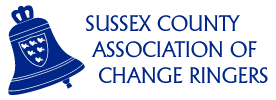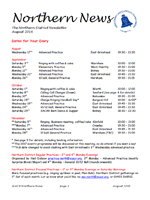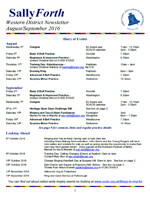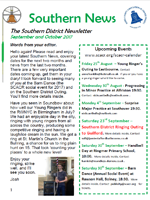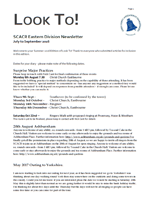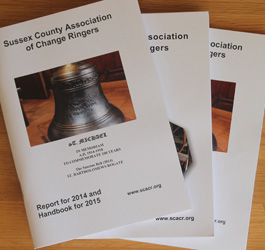Annual Report & Handbook
The Annual Report & Handbook is usually printed in time for the AGM (May); The Handbook lists all Sussex towers, including practice and Sunday ringing details, members, and contact details for the Tower Correspondent and/or Tower Captain. Also included are lists of Association Officers and District Committee Members, including contact details. The Handbook includes the following:
- Association & District Officers & Team members
- Useful information (e.g. Young Ringers, Publicity Materials, Odd-struckness Meter, and more!)
- Tower details
- Annual Reports:
- Master
- Association (General) Secretary
- Treasurer & Association Accounts
- Bell Restoration Fund
- District Secretaries
- Communication & Events team
- Training & Recruitment Team
- Safeguarding
- Library
- Peals
- Bell Restoration Fund
- Quarter peal list
- Peal list and analysis
- List of Honorary Life Members & Long Service Members
- List of unattached members
- Past officers
- Benfry prayers
All association members are entitled to request printed copy of the Annual Report & Handbook when renewing their membership. The report is included in the SCACR annual subscription. The Handbook is available to download here. Members can obtain the password from the Association Secretary.
Non-members can request a copy from the Association Secretary (This email address is being protected from spambots. You need JavaScript enabled to view it.); a small charge applies to non-members to cover printing and postage costs.
What is Bellringing?
Bellringing is a team activity for people of all ages and from all walks of life. Although some ringers are members of the church where they ring the bells, many ringers are not - you don't have to be Christian to ring the bells at a church. Many consider ringing to be their contribution to church life, others do it for the pure pleasure and the company it brings.
Bellringing is an excellent way to keep both mind and body fit and active. Ringers are part of an inclusive and extensive community - at their local tower, within the county, across the UK and even internationally.
"When I’m ringing I forget all the tensions and frustrations of the day. Even better: I couldn’t wish for a nicer group of friends!"
Read on, or contact us and learn more about opportunities to ring near where you live.
Change Ringing
The origins of change ringing lie in the sixteenth century when church bells began to be fitted with a full wheel. This gave ringers control of their bell, allowing sets of bells (rings) to be rung in continously changing patterns.
Music is created by altering the order in which the bells sound. This is done in defined sequences of changes called methods. Learning a few simple methods allows ringers to join in with other bands in towers around the world. Changes can be rung on tower (church) bells or on handbells.
Find out more about the history of ringing in Sussex.
Interested in learning to ring? Bellringers in Sussex would welcome you as a new recruit! Read on to find out more about learning to ring.
